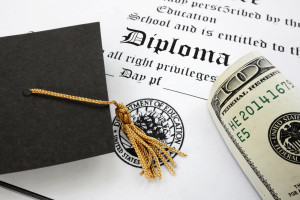PA universities expect state, students to pick up tab on rising tuition

MORE, MORE, MORE: Pennsylvania’s public universities are looking for more money either from the state or students.
By Maura Pennington | Watchdog.org
PHILADELPHIA — State universities contend they will have no choice but to raise tuition unless they get more from taxpayers, but that doesn’t mean students will get more for their money.
Funding for Pennsylvania’s four major state-related universities will remain flat, according to Gov. Tom Corbett’s proposed budget.
The schools — Pennsylvania State University, the University of Pittsburgh, Temple University and Lincoln University — say they will have to pass rising costs to students.
This worries state legislators.
“It just seems like once students leave the college, we’re not clear on the statistics. Where do the students go, what jobs do they get?” asked Sen. Jim Ferlo, D-Allegheny, minority vice chair of the Senate Appropriations Committee.
The four-year graduation rate at Temple in Philadelphia is 43 percent. At Lincoln in Chester County, where the majority of students are the first in their family to attend college, about 25 percent complete their degrees in four years.
“We have so many that have to drop out for financial reasons,” said Robert Jennings, Lincoln University president.
Support for higher education accounts for $1.6 billion of Corbett’s budget plan. At that rate, all four state-related universities testified they would have to raise tuition 2 percent or 3 percent.
That’s no surprise. College tuition has ballooned in the United States by almost 800 percent in the past 30 years.
It’s not clear whether higher returns accompany higher prices.
“In terms of the basic education, there’s little evidence that there’s been a massive improvement in learning,” said Dr. Richard Vedder, director of the Center for College Affordability and Productivity, a nonprofit research organization in Washington, D.C.
At Penn State and Pitt, the graduation rate is higher — about 65 percent. Both universities are focusing more on engineering programs, producing graduates for needed fields.
Yet, unemployment in Pennsylvania still remains higher than the national average, according to the December labor report.
Sen. David Argall, R-Berks, cited “the rather strange dilemma” of high unemployment yet jobs going unfilled.
Some graduates are ending up in positions they could have obtained with only a high school diploma.
“Almost half of the kids who graduate from college are in jobs that don’t require degrees,” said Vedder.
Penn State, which receives about $2,500 of state dollars per student, wants to broaden the scope of its educational services.
“We need to address other markets than simply the traditional 18- to 22-year olds,” Penn State President Rodney Erickson said.
For the time being, Pennsylvania colleges are looking for more money, which may or may not come.
“There’s only a limited amount of money to go around,” said Sen. Andrew Dinniman, D-Chester.
Contact Maura Pennington at mpennington@watchdog.org and follow her on Twitter @whatsthefracas
The post PA universities expect state, students to pick up tab on rising tuition appeared first on Watchdog.org.







